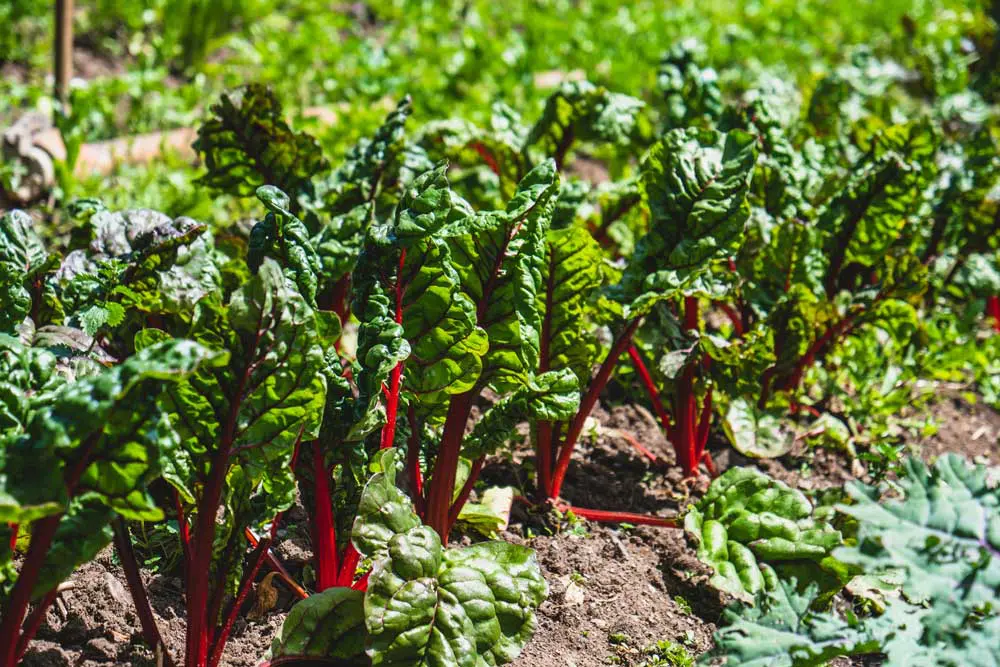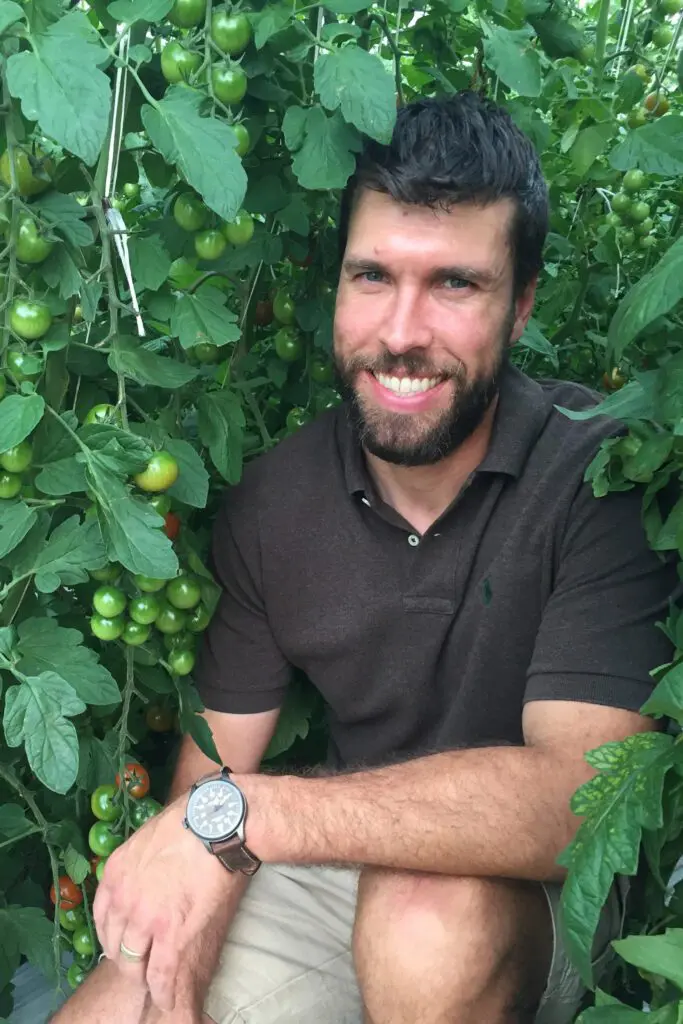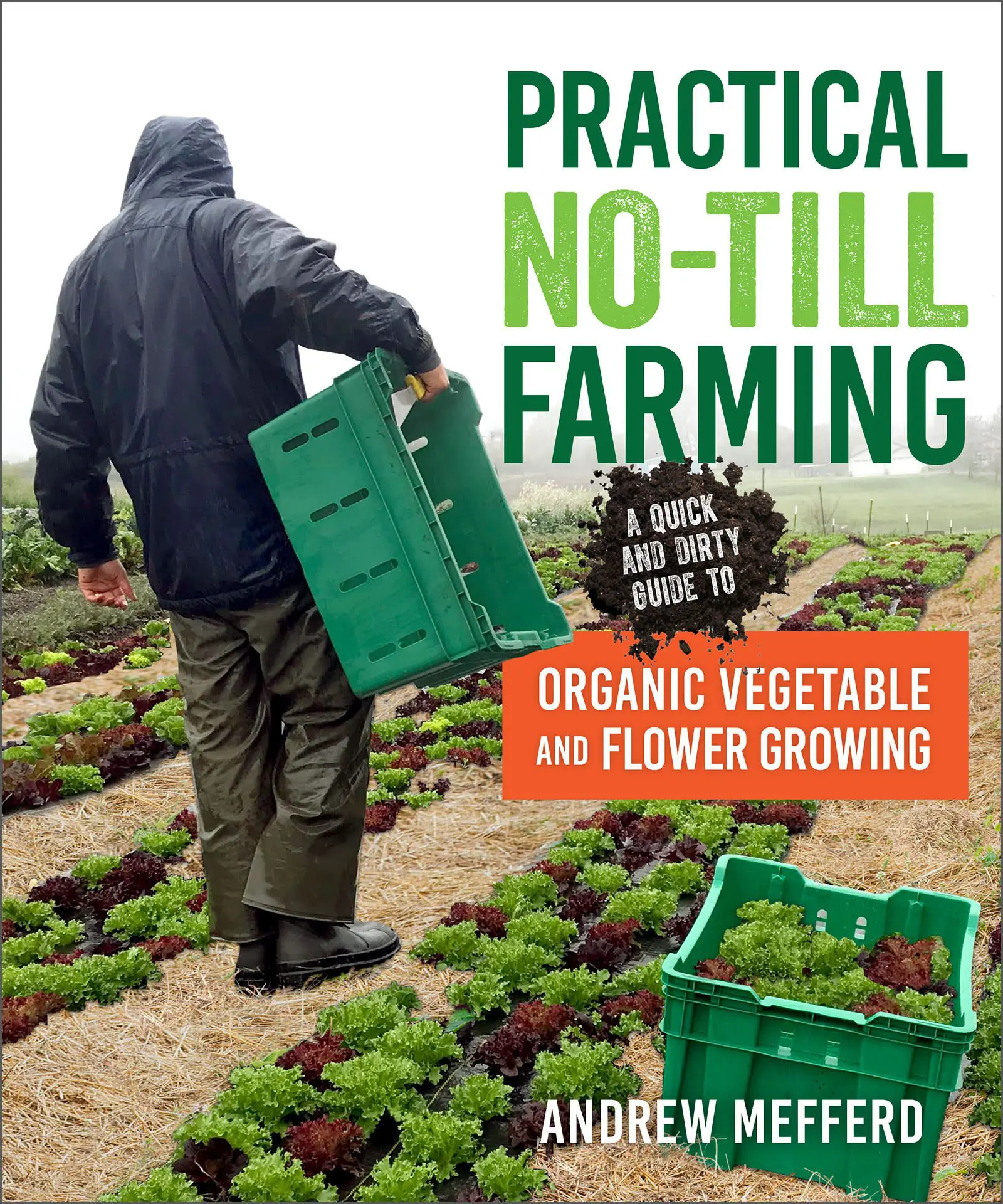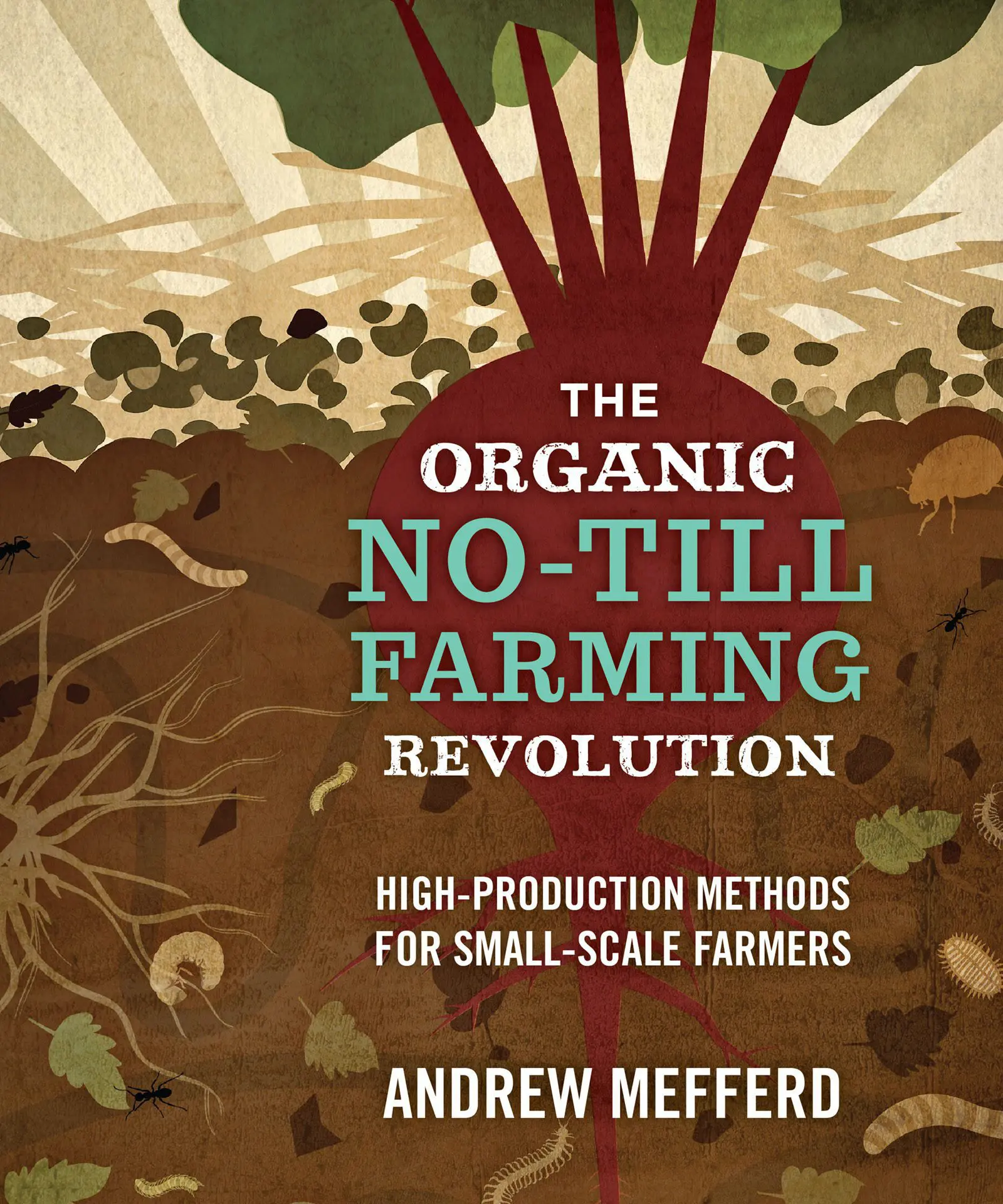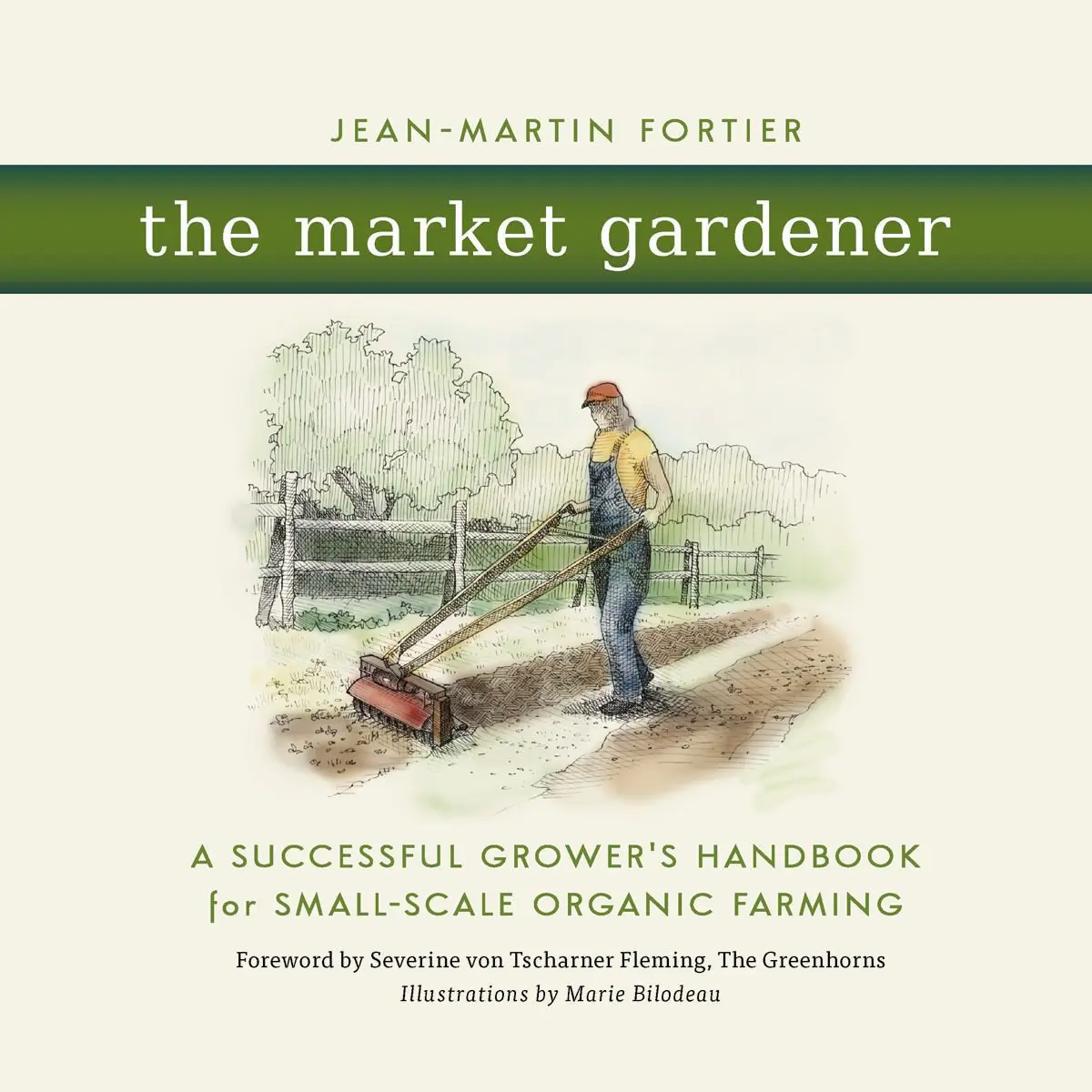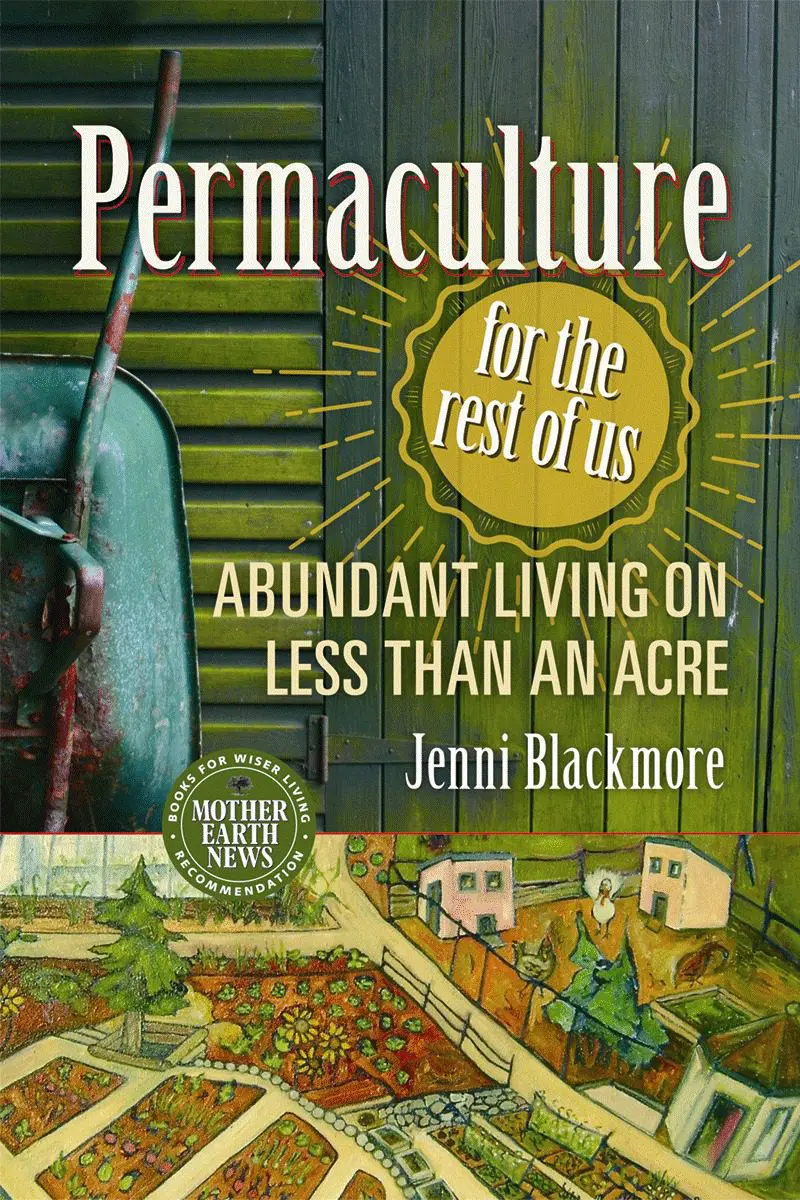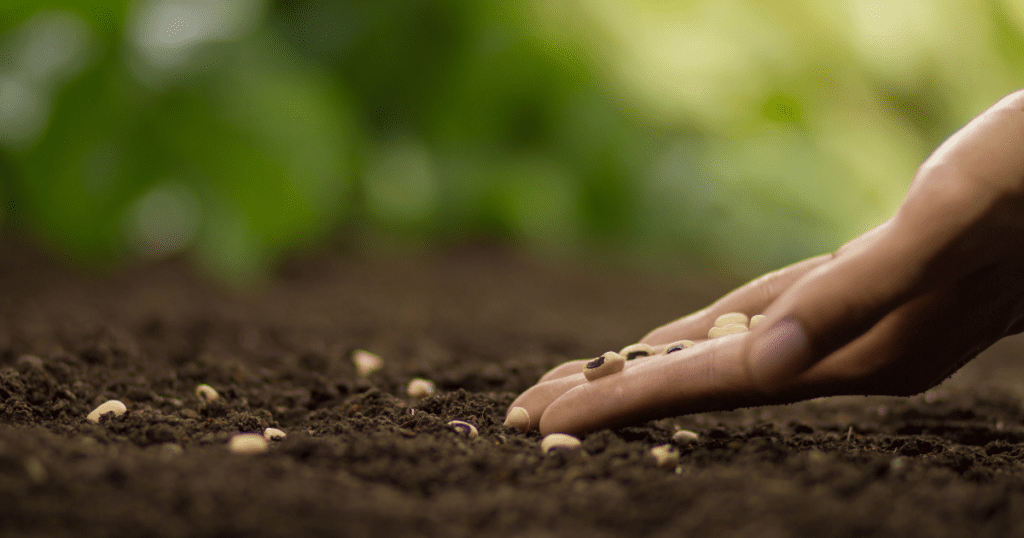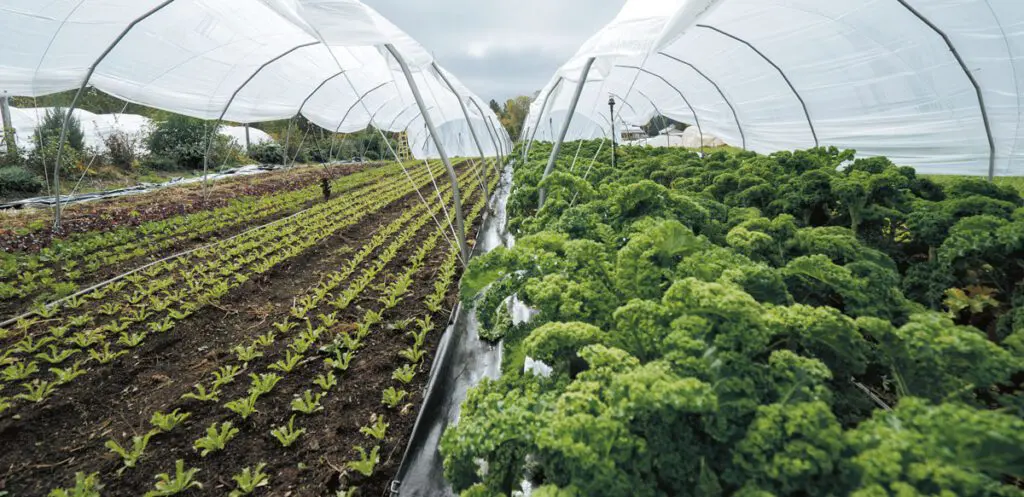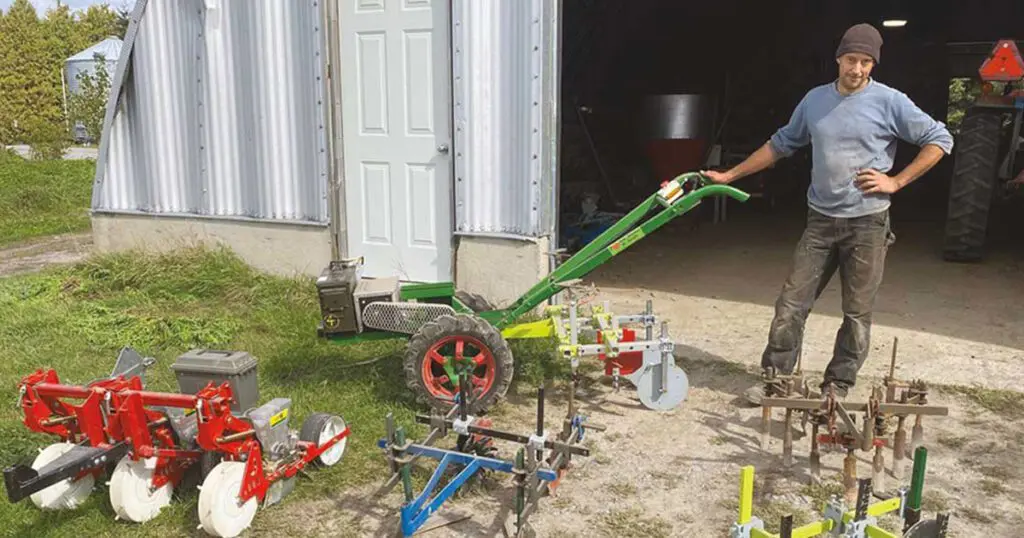
In Practical No-till Farming, author Andrew Mefferd provides a quick-and-dirty guide to transitioning your farm or market garden to no-till methods, including a comprehensive look at the many benefits to doing so. No-till is a great option for sustainable organic vegetable and flower farming, saving time, improving soil health, and much more.
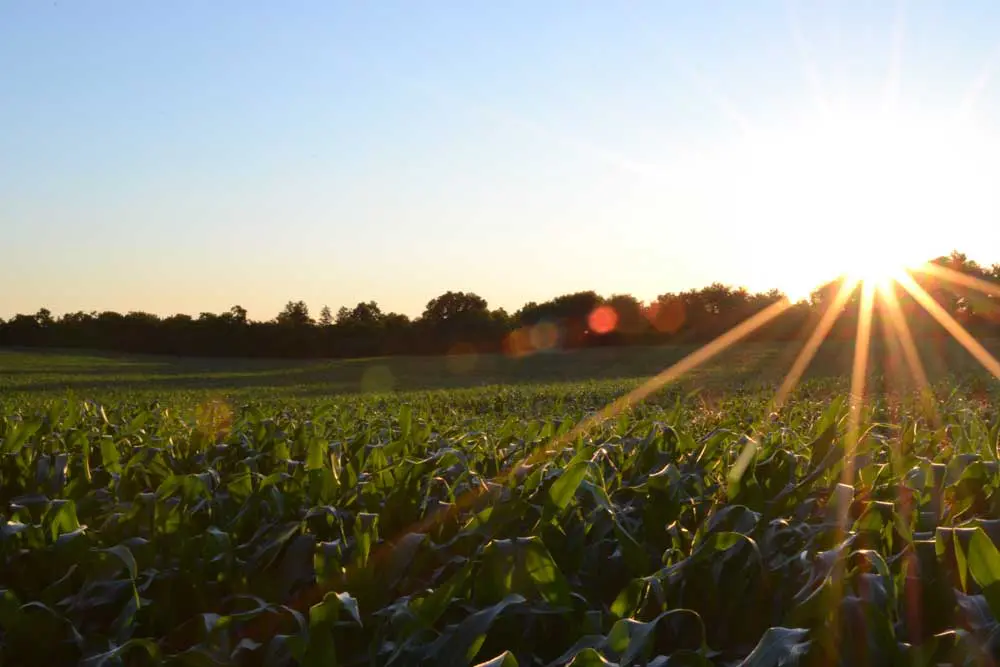
from “Part I: The Why of No-till.”
Advantages of No-till
Advantages for the Environment
As already discussed, one overarching benefit, from which many of the other benefits of no-till flow, is that it can increase the amount of life in the soil. As we have seen, an increase in soil life is a benefit because soil life helps cycle nutrients in the soil as well as helping to build soil organic matter. These two things are important to the growth of crops.
As our understanding of the soil food web has grown, so has interest in how to promote healthy soils. If soil life is the driver of crop growth, promoting soil health can promote crop growth. In fact, Gabe Brown says, “The fusion of life transforms dirt into soil,” which is where the title of his book Dirt to Soil comes from.
Fungus: The Perennial Roots of the Soil
Many fungi survive from season to season, and their hyphae can act as a living bridge and connection from the life and nutrients in the soil to the crop, and from one crop to the next since their networks can remain intact over multiple crops — that is, if we don’t kill them with tillage. Because hyphae can persist between plantings, a healthy fungal population in soil can act almost as an extended root system for our plants from the day they’re transplanted. An established fungal and microbial network ensures that when you put your plants in the ground, there is an existing support system ready to work with them.
There are many symbiotic plant-life support systems like fungal hyphae. Some we didn’t even know about decades ago. These systems are one of the reasons why starting a no-till farm on land that has been sprayed or tilled excessively may be harder to do; it takes time to rebuild the soil life that will support crops. But the benefits of rebuilding soil life will accumulate over time. Those support systems of sympathetic fungal hyphae and non-pathogenic microorganisms like bacteria and invertebrates will eventually get reestablished. The life-support systems that will help your plants in a well-functioning no-till ecosystem may just not be there from the beginning.
Soil and Water Can Do Their Jobs
No-till systems preserve soil structure. This is doubly important because 1) soil structure is the habitat for soil biology, which helps with nutrient cycling, and 2) soil structure helps with water infiltration. Increasing water infiltration is important because it means the farmer gets to keep the water that falls instead of it running off, and the combination of reduced water runoff and increased water-holding capacity can make the most of precious water (especially important in arid regions).
More water seeping into the ground, instead of running off of it, combined with better soil structure both add up to less erosion, which is extremely important for preserving the long-term productivity of our farmland.
Increase in Organic Matter
Increased organic matter, along with improved soil structure, can improve infiltration and water-holding capacity. As discussed more fully above in “Disadvantages of Tillage,” tillage loosens the soil and releases fertility at the expense of organic matter. No-till, on the other hand, retains and can increase organic matter more easily.
| It is surprising to learn that though no-till is held up as one of the most regenerative farming practices possible, much of the research into it was initiated from a commercial standpoint of making farming more profitable by conserving moisture, reducing erosion, and farming more efficiently. It’s an idea that has benefits for both saving money and saving the Earth. |
Advantages for Growers
There are a lot of other advantages to no-till that growers will appreciate. Following are some of the most important.
Set Your Produce Apart
No-till gives you a chance to set your produce apart in an increasingly crowded marketplace. It is the job of direct-market growers to decommodify their food and flowers. We can’t compete with the efficiencies and shortcuts of industrial agriculture, so we have to educate our customers about what sets our food and flowers apart.
Every day, consumers are becoming more conscientious about how their choices affect life on Earth. Tell them that you are farming conscientiously, and you may have a customer for life!
Efficient Use of Space
One thing especially important on small farms is the efficient use of space. A not-insignificant amount of space is taken up on many farms with roadways and turnarounds that have to be big enough to accommodate a tractor or whatever other equipment is used to work the land. For example, you can’t farm fence-to-fence if you have a tractor, because you need the tractor to be able to turn around at the end of the road without hitting the fence. Smaller tools mean less of the farm space needs to be devoted to roads and pathways.
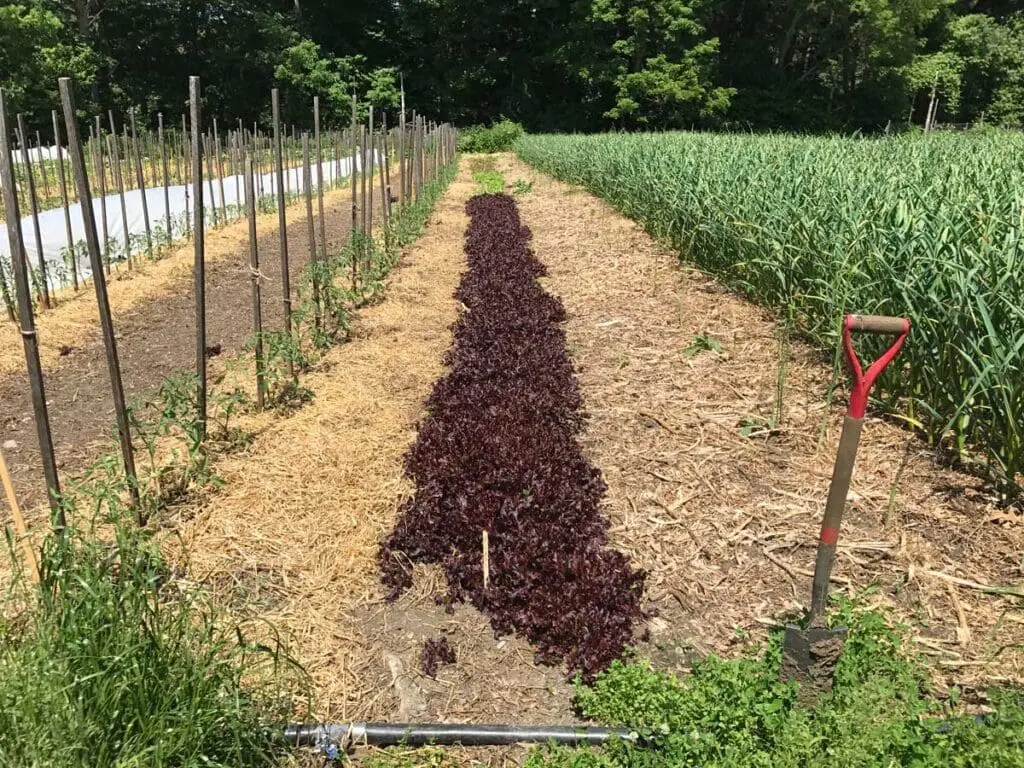
Efficient Use of Time
No-till methods can speed up succession planting and result in more growing days on a field because you don’t have to wait for tillage to replant. Skipping tillage cuts out a big, time-consuming step — one that can take days to get to, especially if the weather doesn’t cooperate.
In fact, many of the no-till growers I know harvest and replant beds the same day; by doing so, they keep living roots in the soil as much as possible, and they make the most of their field space by keeping it cropped as much as possible. Since they don’t have to stop between crops to till and bedform etc., many growers will take a crop out in the morning and put another one in in the afternoon.
Reduced Weeding
Most soil is loaded with weed seeds. Every time you turn the soil, it churns up a fresh batch of weed seeds to sprout. So, if you can kill the already-growing weeds in the top layers of the soil (so they don’t set new seed), and you stop turning the soil over, you will stop introducing new seeds to germinate. Once you have exhausted the weed seed bank at the surface of the soil and stop churning up fresh weed seeds, the result should be very low weed pressure. You’ll only have to deal with weeds that blow in or otherwise arrive on the surface of the soil.
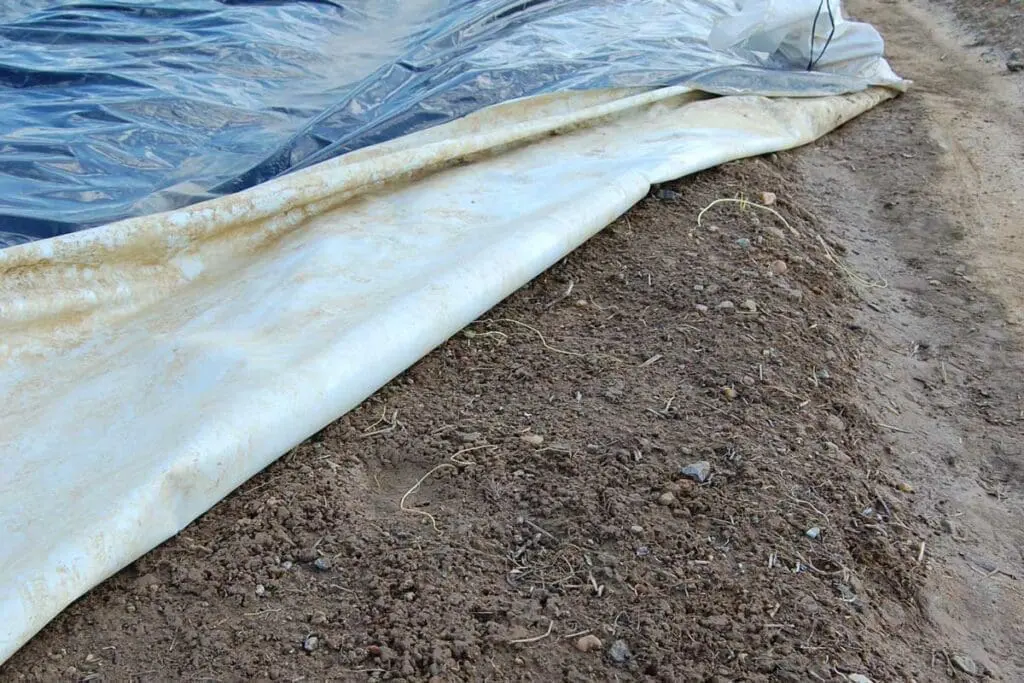
Lower Barriers to Entry
No-till is the perfect gateway for someone to go from being a serious gardener to becoming a small-scale farmer because it can be set up and efficient in a very small space — potentially without many of the traditional trappings of a farm, like a tractor, barn, etc. It almost doesn’t matter how bad the soil is; a person could start a profitable small farm on almost any size tract of land they have access to by building soil up on top of whatever the existing soil is.
The two biggest barriers to someone starting a new farm are usually access to land and access to equipment. Because no-till farming can be very efficient and profitable on a small footprint, it can reduce the land cost for someone getting started.
Better Moisture Management
Another benefit of improved soil structure is improved moisture management. And I say “management” instead of “moisture conservation” because no-till can help maximize or minimize the amount of moisture in a field, depending on the need. Tillage dries the soil, so in dry areas, simply not tilling can conserve the moisture that naturally exists. Conversely, by tarping during rainy seasons, fields can be preserved in a dry condition through wet times of the year. Take, for example, places with a winter rainy or snowy season that brings a lot of precipitation; wet springtime fields can delay farmers from getting to the work of prepping and planting. If a field is tarped in the fall when it is still dry, it can be preserved in that condition through winter rains that otherwise might make a field too wet. When impermeable tarps are removed in the spring, they can reveal relatively dry fields, even in wet areas.
Opens Up New Land for Farming
With tillage, land that could be profitably grown on was limited to land that could be tilled. The significance of this becomes apparent when we consider how much land can’t be tilled. One of the considerations for rating farmland is whether it can be plowed or not; a lot of land that otherwise has good soil is not considered prime farmland due to being too steep or too rocky to be plowed.
No-till opens up a lot of farmland for the potential of farming, just by taking plowing out of the equation. It also adds some nontraditional farmland back into the mix; for example, it puts suburban yards, urban rooftops, and contaminated sites (for flower production) into play.
